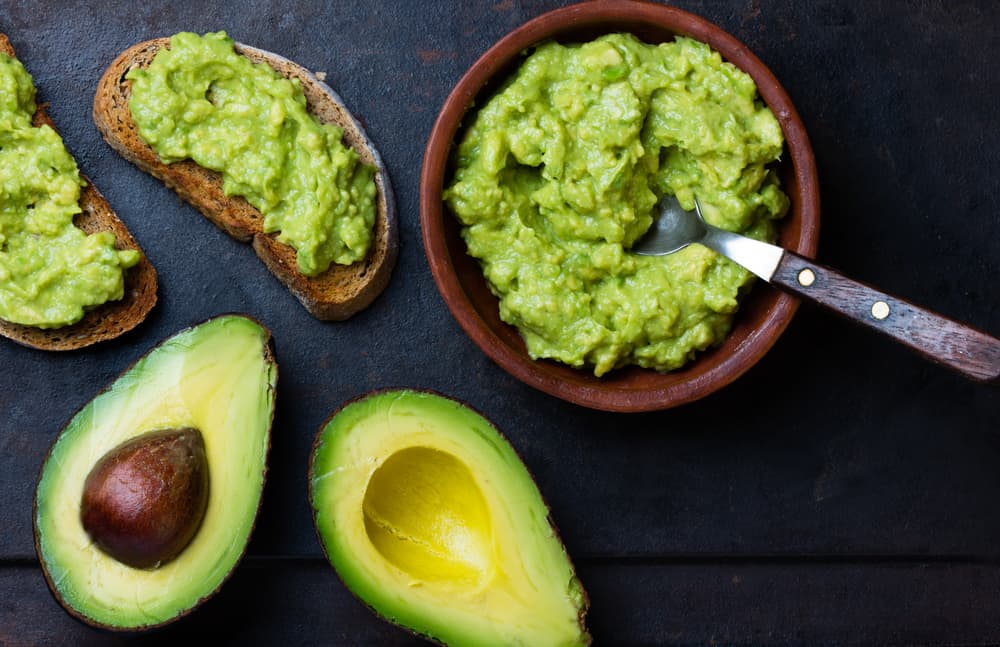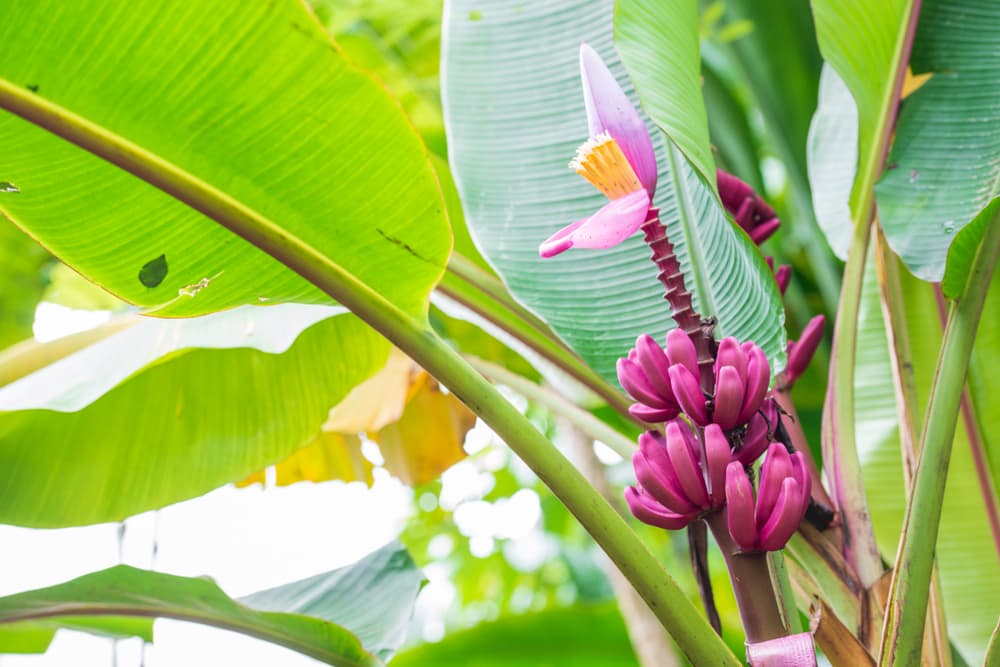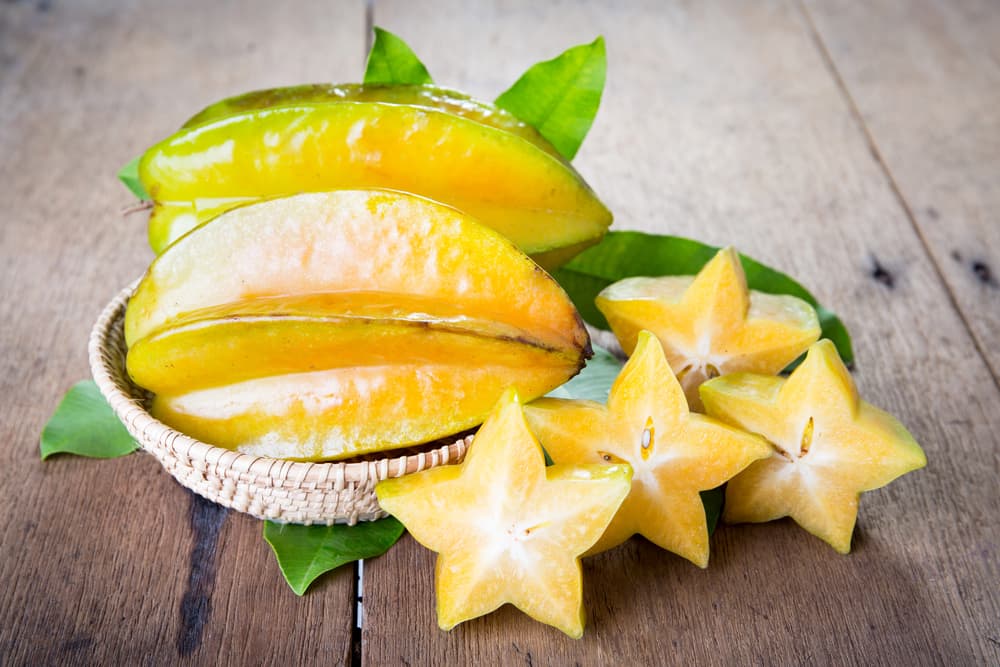Here’s An A-Z List Of Many Fruit Varieties – How Many Have You Tried?

Chris is a gardening writer and nature enthusiast. He graduated from Oxford Brookes University in 2022 with an MA in Psychology. Chris works with the Leeds Green Action Society, helping their food cooperative by growing various fruit and vegetables on their two allotments in Hyde Park, Leeds.
Reviewed By PETER LICKORISH

Peter is a Horticulture Lecturer and self-employed Horticulturist, with a passion for diverse areas of the industry - from garden design to the science behind plant growth and propagation. He has completed the Royal Horticultural Society’s Master of Horticulture (MHort) Award and lectures on RHS courses at Bedford College.
Contributions From ALAN TITCHMARSH MBE

Alan Titchmarsh is a Broadcaster, Author and renowned Horticulturist with 50 years of industry experience. He is recognisable from several TV shows, including Ground Force, Love Your Garden and Britain’s Best Gardens - and written many books, including The Gardener’s Almanac and My Secret Garden. Alan studied at Hertfordshire College of Agriculture and Kew Royal Botanic Gardens.
IN THIS GUIDE
- An A-Z of fruit
- Apple
- Apricot
- Avocado
- Aubergine
- Banana
- Berries
- Blue Bean Fruit
- Butternut squash
- Cherries
- Chupa-chupa
- Crab apple
- Clementine
- Cucumber
- Courgette
- Custard apple
- Damsons
- Durian
- Dates
- Dragon fruit
- Eggfruit
- Entawak
- Fig
- Finger lime
- Grapefruit
- Grapes
- Guava
- Imbe
- Jackfruit
- Java apple
- Jambolan
- Jeruk limo
- Kiwi
- Kaffir lime
- Kumquat
- Lemon
- Lime
- Lychee
- Loquat
- Mango
- Mandarin
- Mangosteen
- Melon
- Nectarine
- Nyssa ogeche
- Nashi pear
- Olive
- Orange
- Papaya
- Persimmon
- Prickly pear
- Peach
- Pomegranate
- Pineapple
- Passion fruit
- Pluot
- Pear
- Pepper
- Pumpkin
- Pomelo
- Quince
- Rambutan
- Raisins
- Rose hips
- Star fruit
- Tomato
- Tangerine
- Tamarind
- Tamarillo
- Ugli fruit
- Voavanga
- Ximenia caffra fruit
- Yangmei
- Zig zag vine fruit
- That’s one heck of a fruit salad!
- References
How many types of fruit can you think of? Fifteen? Twenty? At a push, we bet you’d struggle to think of more than forty.
And does your list include different types of berry, or are you counting berries as one fruit?
Then there are the fruits that most people would identify as vegetables – tomatoes being the prime example, but just one of a handful of sneaky fruits who fit this criterion.
“In my garden, I grow strawberries, raspberries and gooseberries,” shares Journalist & Broadcaster Alan Titchmarsh.

“I have grown a range of unusual fruits that are not regularly found in the supermarket,” says Master Horticulturist Peter Lickorish.
“One I grew, Billardiera longiflora, has small, shiny purple fruits, which looked appealing, but had a dense, mealy flesh that was literally hard to swallow. I have had some strong successes with honeyberry, Lonicera caerulea, which has the flavour and appearance of blueberry but doesn’t need acidic soil.
“A fruit is the ovary of a plant, existing to contain seeds. Sometimes other parts, besides the ovary, are included in the “fruit” – as with pineapples – and we call these accessory fruits.

“The main categories of fruits are pomes, berries, drupes and hesperidia. Pomes, including apples, often have denser flesh as they are also accessory fruits – they’re not just formed from the soft ovary.
“Berries usually contain multiple seeds from a single ovary. Drupes have a hard stone, so a single seed, like a cherry. As for hesperidia, they’re segmented fruits, usually of citrus plants.”
An A-Z of fruit
Below you’ll find 73 different fruits with a little information about each.
Apple
- Commonplace spherical fruits, usually green or red or some combination of the two.
- These will be familiar to pretty much every Brit, whether picked from a tree or a supermarket shelf.
Apricot
- Small, yellow-orange fruit usually with succulent sweet flesh, although sometimes dry and sour. Includes an inedible stone.1Apricot kernels and apple and pear seeds are unsafe to eat. (2021, August 11). Ministry for Primary Industries. Retrieved March 16, 2023, from https://www.mpi.govt.nz/food-safety-home/safe-eat/apricot-and-peach-kernels-and-apple-and-pear-seeds-are-unsafe-to-eat/
Avocado
- A supposed favourite of the hipsters, this savoury fruit is technically a large berry with a single seed inside.
- Thought to hail from the Americas.

Aubergine
- The first fruit in this list that masquerades as a vegetable, and it definitely tastes best cooked. Technically it’s a big berry!2Abadi, M. (2018, June 24). 14 vegetables that are actually fruits. Business Insider. Retrieved March 16, 2023, from https://www.businessinsider.com/fruits-and-vegetables-difference-2018-6?r=US&IR=T#eggplant-7
Banana
- Most bananas are genetically identical members of a specific genus, although other varieties exist including blue and even pink ones!

Berries
- Lumping together the common berries is a contentious decision, and we only made it because we’ve also written a comprehensive A-Z of berries.

Blue Bean Fruit
- The long blue pods of Decaisnea fargesii split open to reveal a pale, melon-like flesh and a row of sparkling black seeds.
- It can be eaten raw or the high pectin content makes it good for jams and jellies.
Butternut squash
- This pumpkin variant boasts a sweet nuttiness that lends itself best to savoury dishes, hence why butternuts live in the vegetable aisle.
Cherries
- Prunus avium and P. cerasus are the two varieties you’ve probably tried, but there are tons of types of cherry. Small, red, and delicious.
Chupa-chupa
- Quararibea cordata aka chupa-chupa is a yellow-orange seeded fruit with soft, sweet, juicy flesh. Looks a little like a fig.

Crab apple
- A small variety of apple commonly seen in the UK, less familiar in food but still edible. Avoid the seeds and for best results cook first.3WebMD Editorial Contributors. (2021, May 10). Can You Eat Crab Apples? WebMD. Retrieved March 16, 2023, from https://www.webmd.com/diet/can-you-eat-crab-apples#1
- They make fantastic jelly.
Clementine
- This citrus fruit, technically a tangor, is a hybrid between an orange and a mandarin variety, named after the man who discovered it.4Gilad, E. (2013, November 21). Klementina: The fruit named for a French missionary in Algeria. Haaretz.com. Retrieved March 16, 2023, from https://www.haaretz.com/2013-11-21/ty-article/.premium/word-of-the-day-klementina/0000017f-da73-d432-a77f-df7b191c0000
Cucumber
- Long and green, and another resident of the veggie aisle that’s actually a fruit. Hails originally from South Asia but now loved worldwide.

Courgette
- This cucurbit is related to the cucumber, as you probably guessed, but also squashes and melons!
- Mature courgettes can be called marrows but technically they’re separate fruits.
Custard apple
- Annona squamosa fruit AKA custard apple, sugar-apple or sweet-sop is a sweet and creamy tropical fruit with lots of segments.

Damsons
- Damsons are a variant of plum widely loved by foragers in the UK: they’re often too sour to eat raw but go a treat in jams, jellies and other home creations.
Durian
- A tropical fruit notorious for its pungent aroma, to the degree that it’s banned from many hotels in Asia.

Dates
- Popular in Northern Africa and the Middle East, these dried fruits have a strong sweetness.
Dragon fruit
- This vibrant-looking fruit is pink and fire-shaped with green tips – very exciting.
- Its subtle flesh with plenty of seeds goes great in a fruit salad.

Eggfruit
- Pouteria campechiana is a South American tree whose fruit looks nothing like an egg.5Baehni, K. (n.d.). Pouteria campechiana. Plants for a Future. Retrieved March 16, 2023, from https://pfaf.org/user/Plant.aspx?LatinName=Pouteria+campechiana
- They’re sweet with a flavour echoing mango, sweet potato and various other fruits.
Entawak
- Artocarpus anisophyllus is a very spiky, orangey red fruit.
- Inside you’ll find loads of seeds which are edible, and very tasty if roasted and tossed with salt.
Fig
- This tree and its fruit are related to mulberries, and has been popular since ancient times (hence old sculptures using fig leaves to cover themselves in cartoons).6Gotthardt, A. (2018, April 5). Why Fig Leaves Cover the Private Parts of Classical Sculptures. Artsy. Retrieved March 16, 2023, from https://www.artsy.net/article/artsy-editorial-fig-leaf-story-sin-censorship-catholic-church
- Sweet and delicious.
Finger lime
- Also known as the caviar lime because of the myriad small segments you’ll find inside, this citrus fruit is long, thin, and very unusual.
- “These segments squash in the mouth to give bursts of sharp flavour,” adds Peter.

Grapefruit
- The marmite of the fruit world, grapefruit is a big, bitter citrus that some people love enough to eat every day, while others spurn it for life.
Grapes
- Green and black clusters of grapes are a common sight in UK supermarkets but this fruit comes in a spectrum of colours.
- Hugely popular worldwide in fruit form or, more so, in wine form.
Guava
- This tropical fruit has a slightly floral flavour that makes it a popular treat in the regions it grows.
- You can find it in the UK but it’s less common than some other tropical fruits.
Imbe
- Garcinia livingstonei is a fruit hailing from the southern regions of the African continent.
- The small orange fruits have peachy coloured flesh renowned for being very sour.
Jackfruit
- This fruit is related to mulberries and figs but looks nothing like them. Instead, it’s a giant knobbly fruit filled with juicy, sweet flesh.

Java apple
- Syzygium samarangense, aka java apple, hails from Asia.
- The small red pear-shaped fruit with its white flesh can be sweet or sour, and is a little watery.

Jambolan
- Syzygium cumini aka Java plum or jambolan is a tree which has small, purple fruits.
- Reputed to have a tart and sour flavour profile.
Jeruk limo
- This small citrus resembles a common lime thanks to its inner segments, and is a popular way to bring aroma to dishes.

Kiwi
- The furry skin puts a lot of people off, but kiwis’ tangy sweetness rewards the effort.
- And guess what? You can eat the whole fruit with no ill effects, if you’re brave enough.7Julson, E. (2018, April 11). Can You Eat Kiwi Skin? Healthline. Retrieved March 16, 2023, from https://www.healthline.com/nutrition/eating-kiwi-skin
Kaffir lime
- Citrus hystrix is often confused with jeruk limo, although it’s a different fruit.
- The fruit and leaves are great for bringing citrus aroma to dishes.
Kumquat
- These small citrus fruits are interesting in that you can eat the skin as well as the fruit for a very intense, punchy citrus burst.8McCulloch, M. (2018, July 2). What Are Kumquats Good for and How Do You Eat Them? Healthline. Retrieved March 16, 2023, from https://www.healthline.com/nutrition/kumquat

Lemon
- Probably one of the most common citrus fruit thanks to its captivating and versatile flavour.
- Lemon works well in pretty much any style of cooking, from savoury to sweet, and even garnishing drinks.
Lime
- A common citrus fruit you’ll find here in the UK: smaller and greener than lemons, and with their own subtle flavour.
Lychee
- Small and covered in a thick red-pink skin, lychees are the quintessential exotic fruit.
- The white flesh is sweet and floral, making it delicious raw or incorporated into deserts. The seed and skin are inedible.

Loquat
- This Chinese fruit is often grown ornamentally, but historically its leaves were sought after for tea.9Liu, Y., Zhang, W., Xu, C., & Li, X. (2016). Biological Activities of Extracts from Loquat (Eriobotrya japonica Lindl.): A Review. International Journal of Molecular Sciences, 17(12), 1983. https://doi.org/10.3390/ijms17121983
- Fruits are small yellow pomes. Pomes are the same category of fruit as apples and pears.
Mango
- Rich orange flesh wrapped in green-red skin, a ripe mango truly has a flavour to savour. Perhaps the most recognisable ‘tropical’ fruit.
Mandarin
- This small citrus is considered a distinct species from the regular orange.
- Usually they’re smaller, sweeter, and far less acidic than their larger citrus cousins.
Mangosteen
- Thick purple skin surrounds white, segmented flesh.
- This plant is hard to grow making the fruit fairly expensive, and not very commonplace as a result.10Peng, J. (2022, September 29). The Real Reason Mangosteen Is So Expensive. Tasting Table. Retrieved June 5, 2023, from https://www.tastingtable.com/1032433/the-real-reason-mangosteen-is-so-expensive/

Melon
- There are many types of melon, all of which are, technically speaking, a type of berry called “pepos”.
- You’re probably more familiar with names like honeydew, cantaloupe, watermelon and others though.
Nectarine
- These smooth-skinned fruits have flesh that’s either rock hard, or delightfully soft and juicy depending on the ripeness.
- The stone inside is inedible, so don’t try!11Fruit Pits. (2022, January 24). Missouri Poison Center. Retrieved March 16, 2023, from https://missouripoisoncenter.org/is-this-a-poison/fruit-pits/
Nyssa ogeche
- Another exotic tree also known as the white tupelo, river lime, or sour gum.
- The small, purple coloured fruit makes a good substitute for lime.
Nashi pear
- Pyrus pyrifolia, aka Asian pear, Japanese pear, Chinese pear, or various other names depending on (presumably) the country where you found it.
- They have the crispness and shape of an apple, but are very much pears.

Olive
- Although they’re firm savoury favourites, olives are fruits most closely related to cherries, peaches, and other stone fruits in the drupe family.
- Do you prefer green or black though – that’s the question.
Orange
- Oranges are the mother of all citrus fruits, and for good reason. They’re big, they’re juicy, and they’re delicious.
- Peeling off all the pith also keeps your hands busy for a while.
Papaya
- Also known as the pawpaw, favourite of Baloo the bear from Jungle Book, this fruit is sweet and vibrant, and much loved around the world.

Persimmon
- Disospyros kaki, or Oriental persimmon, is a vibrant orange fruit with shiny skin and a tuft of foliage at the top.
- Flavour-wise you can expect a sweetness akin to honey, in a fruit the size and shape of a salad tomato.

Prickly pear
- This cactus species is unusual in that humans eat the sweet fruit which looks, perhaps unsurprisingly, a little like a prickly pear might (if it were pink).

Peach
- Like a slightly furrier nectarine, peaches are a mainstay of British fruit aisles thanks to their sweet and slightly tangy flesh. Lovely when perfectly ripened.
Pomegranate
- If you like working hard to enjoy your fruit, here’s one for you.
- Pomegranates contain hundreds of tiny segments, each bursting with juice but each requiring manual excavation with a spoon or, if you’re feeling messy, a finger.
Pineapple
- Tangy and delicious, and famous for the fact that pineapple digests you while you eat it (thanks to the enzyme bromelain it contains).12Science Meets Food. (2019, November 26). Bromelain in Pineapple or Why Pineapples Sting Our Tongue. Retrieved March 16, 2023, from https://sciencemeetsfood.org/bromelain-in-pineapple/
- We bet you didn’t know that pineapple grows in the ground, not on trees?

Passion fruit
- Perhaps one of the prettiest fruits, this purple shell with its white pith and orange centre has a unique and completely delicious tropical flavour.

Pluot
- Mix plums and apricots and what do you get? Pluots.
- There are over 20 varieties, each with their own subtly different colour and flavour.
Pear
- A British favourite, pears are delicious eaten raw (if sometimes a little powdery..?), but also goes a treat in crumbles, jams, chutneys, and if you’re feeling exotic, the alcoholic drink known as perry.13Beckett, F. (2020, November 6). ’Tis the season to drink perry. The Guardian. Retrieved March 16, 2023, from https://www.theguardian.com/food/2020/nov/06/perry-pear-cider-round-up-fiona-beckett-drinks
Pepper
- Peppers and chillies are fruits as well, who’d have known?
- Both most commonly come in green, yellow, and red, but you can also find orange, purple, and even black varieties!

Pumpkin
- A member of the squash family that has become most famous for being hacked apart by children and adults alike each year at Halloween
- It’s quite a strange fate for a fruit, when you think about it.
Pomelo
- This enormous citrus fruit sits above the grapefruit in the citrus evolutionary tree, and tastes fairly similar too.14Wu, G. A., Terol, J., Ibanez, V., López-García, A., Pérez-Román, E., Borredá, C., Domingo, C., Tadeo, F. R., Carbonell-Caballero, J., Alonso, R., Curk, F., Du, D., Ollitrault, P., Roose, M. L., Dopazo, J., Gmitter, F. G., Rokhsar, D. S., & Talon, M. (2018). Genomics of the origin and evolution of Citrus. Nature, 554(7692), 311–316. https://doi.org/10.1038/nature25447
- Most people are surprised at just how big pomelos are!

Quince
- This bright gold fruit looks like a pear, but is far more sour.
- To the point that not many people advocate eating it raw, preferring instead to use it in jams and similar.15McCandlish, L. (2009, November 11). Demystifying The Quince. NPR. Retrieved March 16, 2023, from https://www.npr.org/2009/11/11/120288799/demystifying-the-quince?t=1639934900188
Rambutan
- These intriguing little fruits are covered in spiky pink tendrils, and have been described as having a taste something similar to grapes, perhaps with a more sour floral flavour in the mix.

Raisins
- Dry a grape for long enough and you’re left with a raisin.
- While it’s not technically its own fruit, raisins are popular all over the world so we thought it’d be rude to leave them out.
Rose hips
- Rose hips can be eaten raw, but you need to avoid the hairs inside the fruit if so. Most people agree they’re better off in jams, syrups, or even tea.16Harford, R. (2022, August 17). Everything You Need to Know About Rosehips. Eat Weeds. Retrieved March 16, 2023, from https://www.eatweeds.co.uk/rosehip-faq
Star fruit
- Nature is an incredible thing, and the starfruit is a beautiful demonstration of the wonder it’s capable of. Slices of the fruit have a beautiful star shape.
- In terms of taste, the mild sour flavour isn’t that distinctive, but is still well regarded.

Tomato
- Tomatoes are the classic “aha!” vegetable, in that people delight in telling you they’re actually fruits.
- Next time you encounter someone like this, you can recount all the other various ‘vegetables’ that are actually fruits, and send them packing.
Tangerine
- Tangerine is a type of orange that is sometimes treated as its own species, so depending on which side of that debate you align with, you may not consider it worthy of its own addition in this list.
Tamarind
- This pungent, aromatic fruit is widely used for food flavourings. It is similar in structure to a bean pod.
- If you get a chance you can also try it dried: a delicious if incredibly sour snack.

Tamarillo
- The small, egg-shaped fruits of the tamarillo plants are primarily tangy with occasional sweetness depending how ripe they are. The flavour is known for being very bold.
- They’re similar in shape, structure and genetics to a tomato.
Ugli fruit
- This unflatteringly named plant is a big citrus fruit that arose as a natural hybrid of oranges and grapefruits. It’s also known, perhaps more fairly, as a tangelo.

Voavanga
- Vangueria madagascariensis has many names, but voavanga is perhaps the most common.
- This fruit is orange, ovular and tastes a little like an apple. It’s not achieved as much global renown as some other exotic fruits, however.
Ximenia caffra fruit
- AKA the sourplum, the fruit of this tree is small and orange or red in colour. It’s very sour, hence the name.
Yangmei
- Myrica rubra is another fruit with several names, many of which allude to its flavour: something similar to raspberry or strawberry, with a slightly more herbal undercurrent. It has a raspberry like shape, colour and size.
- The flavour varies depending on the level of ripeness.

Zig zag vine fruit
- The final fruit in our list is a small orange contender that hails from Malesia and parts of Australia.17Melodorum leichhardtii. (n.d.). Useful Tropical Plants. Retrieved March 16, 2023, from https://tropical.theferns.info/viewtropical.php?id=Melodorum+leichhardtii
- Its sherbety flavour makes it a popular treat, and it’s also used to create tangy sauces. It has cylindrical, eye-catching orange fruits.
That’s one heck of a fruit salad!
There you have it: 72 of Earth’s numerous fruits.
While there are undoubtedly more fruits than those in our list, the selection above is an expansive cross-section of the most popular in various regions around the world.
References
- 1Apricot kernels and apple and pear seeds are unsafe to eat. (2021, August 11). Ministry for Primary Industries. Retrieved March 16, 2023, from https://www.mpi.govt.nz/food-safety-home/safe-eat/apricot-and-peach-kernels-and-apple-and-pear-seeds-are-unsafe-to-eat/
- 2Abadi, M. (2018, June 24). 14 vegetables that are actually fruits. Business Insider. Retrieved March 16, 2023, from https://www.businessinsider.com/fruits-and-vegetables-difference-2018-6?r=US&IR=T#eggplant-7
- 3WebMD Editorial Contributors. (2021, May 10). Can You Eat Crab Apples? WebMD. Retrieved March 16, 2023, from https://www.webmd.com/diet/can-you-eat-crab-apples#1
- 4Gilad, E. (2013, November 21). Klementina: The fruit named for a French missionary in Algeria. Haaretz.com. Retrieved March 16, 2023, from https://www.haaretz.com/2013-11-21/ty-article/.premium/word-of-the-day-klementina/0000017f-da73-d432-a77f-df7b191c0000
- 5Baehni, K. (n.d.). Pouteria campechiana. Plants for a Future. Retrieved March 16, 2023, from https://pfaf.org/user/Plant.aspx?LatinName=Pouteria+campechiana
- 6Gotthardt, A. (2018, April 5). Why Fig Leaves Cover the Private Parts of Classical Sculptures. Artsy. Retrieved March 16, 2023, from https://www.artsy.net/article/artsy-editorial-fig-leaf-story-sin-censorship-catholic-church
- 7Julson, E. (2018, April 11). Can You Eat Kiwi Skin? Healthline. Retrieved March 16, 2023, from https://www.healthline.com/nutrition/eating-kiwi-skin
- 8McCulloch, M. (2018, July 2). What Are Kumquats Good for and How Do You Eat Them? Healthline. Retrieved March 16, 2023, from https://www.healthline.com/nutrition/kumquat
- 9Liu, Y., Zhang, W., Xu, C., & Li, X. (2016). Biological Activities of Extracts from Loquat (Eriobotrya japonica Lindl.): A Review. International Journal of Molecular Sciences, 17(12), 1983. https://doi.org/10.3390/ijms17121983
- 10Peng, J. (2022, September 29). The Real Reason Mangosteen Is So Expensive. Tasting Table. Retrieved June 5, 2023, from https://www.tastingtable.com/1032433/the-real-reason-mangosteen-is-so-expensive/
- 11Fruit Pits. (2022, January 24). Missouri Poison Center. Retrieved March 16, 2023, from https://missouripoisoncenter.org/is-this-a-poison/fruit-pits/
- 12Science Meets Food. (2019, November 26). Bromelain in Pineapple or Why Pineapples Sting Our Tongue. Retrieved March 16, 2023, from https://sciencemeetsfood.org/bromelain-in-pineapple/
- 13Beckett, F. (2020, November 6). ’Tis the season to drink perry. The Guardian. Retrieved March 16, 2023, from https://www.theguardian.com/food/2020/nov/06/perry-pear-cider-round-up-fiona-beckett-drinks
- 14Wu, G. A., Terol, J., Ibanez, V., López-García, A., Pérez-Román, E., Borredá, C., Domingo, C., Tadeo, F. R., Carbonell-Caballero, J., Alonso, R., Curk, F., Du, D., Ollitrault, P., Roose, M. L., Dopazo, J., Gmitter, F. G., Rokhsar, D. S., & Talon, M. (2018). Genomics of the origin and evolution of Citrus. Nature, 554(7692), 311–316. https://doi.org/10.1038/nature25447
- 15McCandlish, L. (2009, November 11). Demystifying The Quince. NPR. Retrieved March 16, 2023, from https://www.npr.org/2009/11/11/120288799/demystifying-the-quince?t=1639934900188
- 16Harford, R. (2022, August 17). Everything You Need to Know About Rosehips. Eat Weeds. Retrieved March 16, 2023, from https://www.eatweeds.co.uk/rosehip-faq
- 17Melodorum leichhardtii. (n.d.). Useful Tropical Plants. Retrieved March 16, 2023, from https://tropical.theferns.info/viewtropical.php?id=Melodorum+leichhardtii
